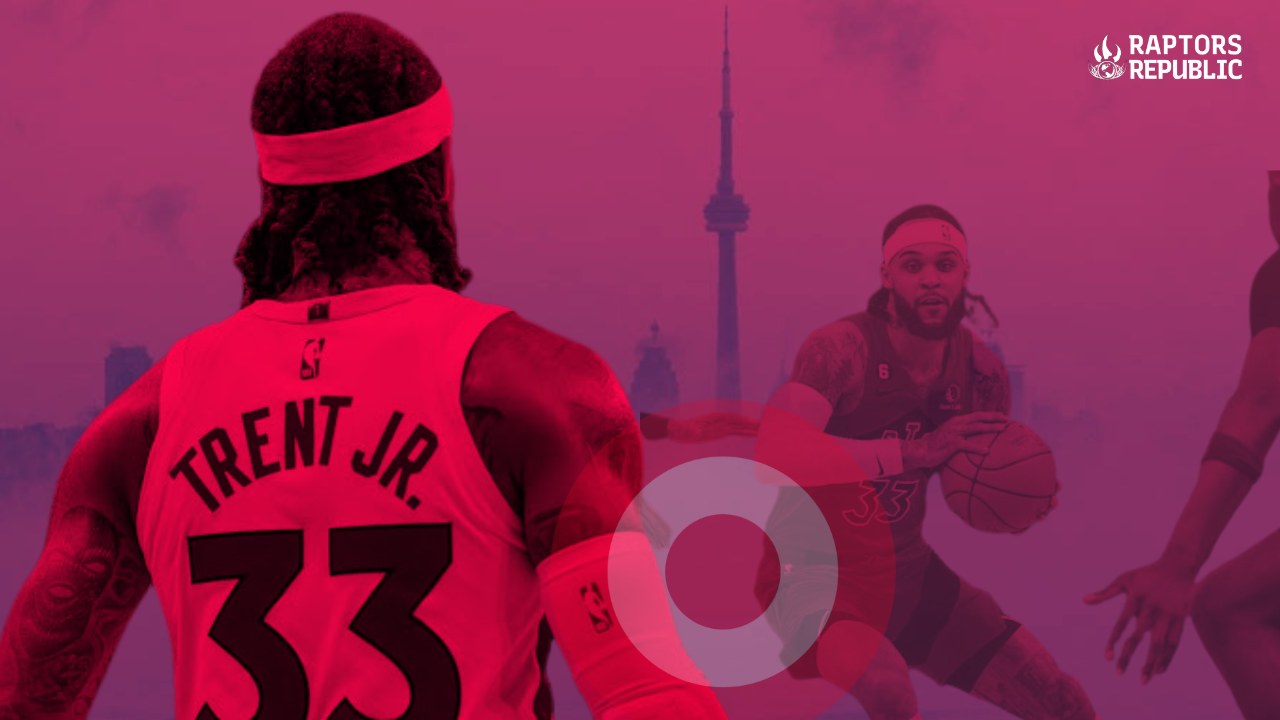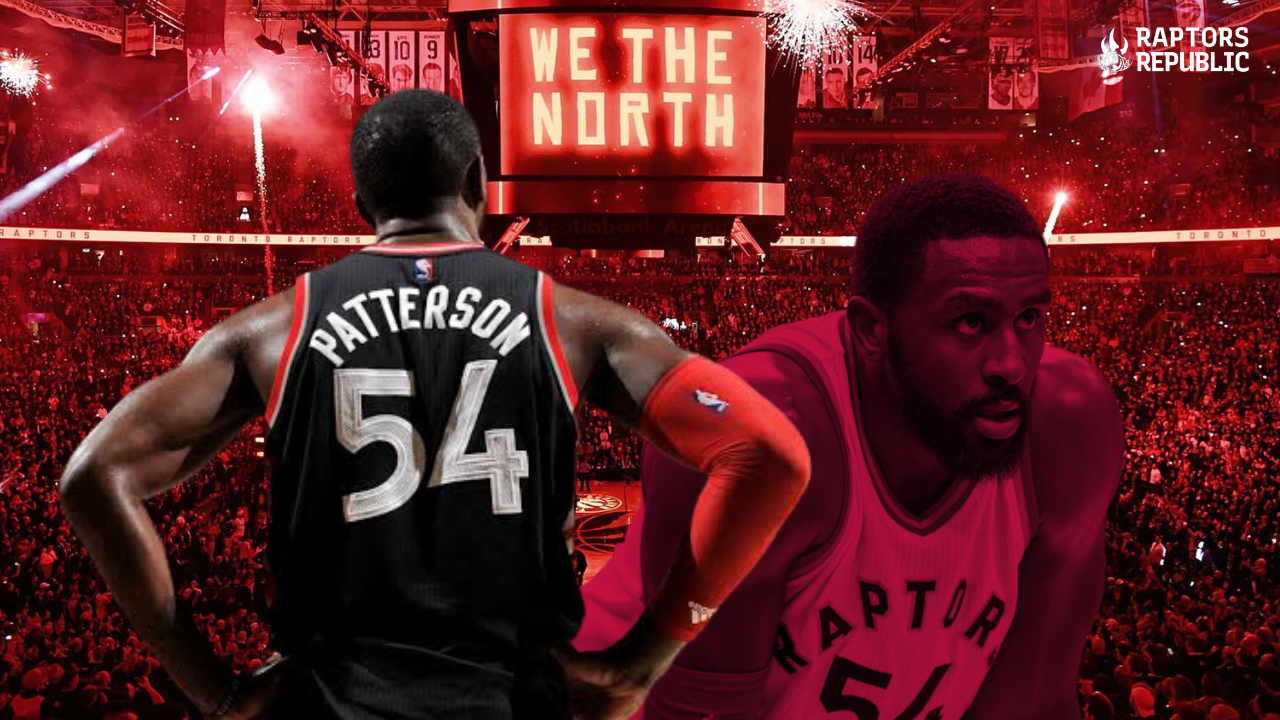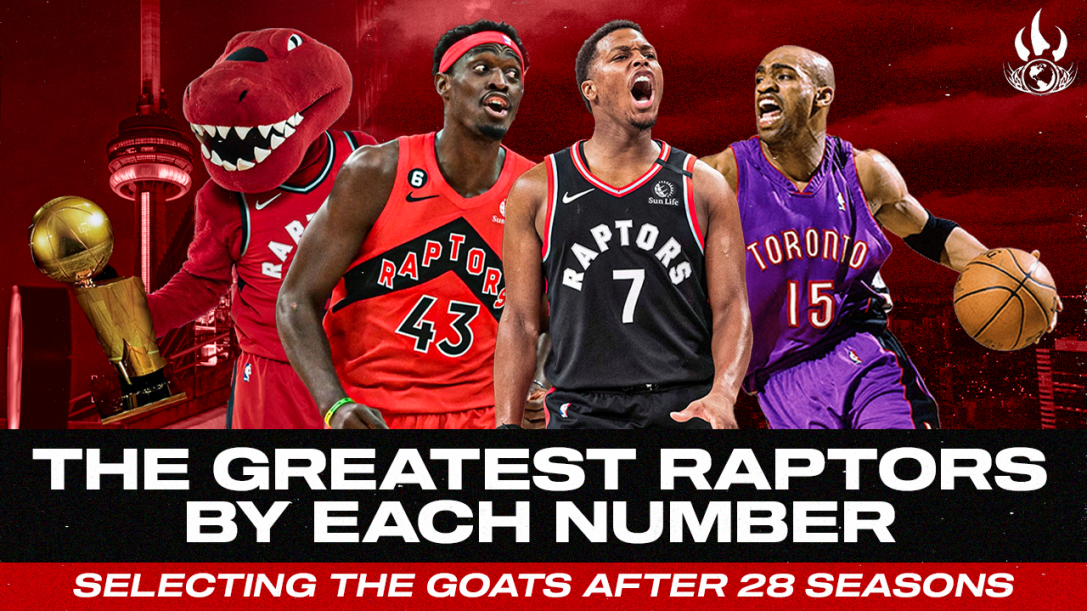Regardless of how you view Pascal Siakam & Fred VanVleet and how they lead offense, they were two of the most often doubled players in the NBA last season. Teams loaded up on the Raptors two offensive leaders without much pause. The reasoning, depending on how you view the Raptors:
- The problem was that they didn’t have enough creation elsewhere on the roster, caught in the odd years of Scottie Barnes’ steps towards All-Star creator status, and the Raptors other tertiary players (Gary Trent Jr. and O.G. Anunoby) not being well rounded enough to drive offense against a wide array of gameplans or for elongated stretches.
- There was an improper allocation of possessions and playstyle that negatively affected what would have been otherwise good creators (Barnes, Anunoby etc.), and made them lesser than they should have been. They were made reactionary pieces to Siakam & VanVleet’s creation, instead of proactive pieces to create for themselves and others.
- A mix of all these things, with emphasis placed wherever you please.
The Raptors have a new coach, Darko Rajakovic, whose ethos on playstyle is more publicly accessible than most coaches you’ll see. Be it scholarly articles about the pick n’ roll, hours long zoom interviews about player development, long-form interviews on installing an offense, or behind the scenes videos of him working players through drills – he is on wax with his beliefs. Those beliefs, of course, are subject to the rosters he has helped coach. Sure, he’s studied the pick n’ roll a ridiculous amount, but when he joined both the Suns & the Grizzlies, their pick n’ roll frequencies dropped. Why? Well, Devin Booker was better at working in motion and off of hand-offs, and Ja Morant wasn’t the most natural pick n’ roll engine because of teams going under the screens.
The approach has to change to maximize the roster. The best example across the past 30-40 years of coaching is Gregg Popovich radically altering how the Spurs succeed based on his personnel.
Rajakovic is walking into a coaching job with a team that has been a bottom-5 halfcourt offense the past two seasons and hasn’t been in the top half of the league in 4 years. Not only that, but the player who has run the most pick n’ rolls for the team, and did so most effectively, left in free agency. Some people think that’s bad, some think it’s good, it doesn’t matter for the point: massive change is coming.
Barnes will get more of the ball, obviously. Anunoby could see an uptick of on-ball responsibilities. It’s hard to imagine Siakam taking on even more usage. Hybrid lineups with Poeltl + shooting will run some delay action, yes. Dennis Schroder will get some, sure. One of the Raptors big-sized wings or wing-sized bigs will hopefully make a leap of some sort. An obvious name, though? Trent Jr.
When it comes to the main goal of basketball, scoring the ball, it’s easy to make the case for Trent Jr. as the second best player on the team in that regard. As far as shooting off the bounce goes, no one comes close to Trent Jr.’s overall ability on the Raptors. Siakam has developed into a truly talented offensive player, and one who wields his mid-range pull-up against defensive coverages, but Trent Jr. can pull-up from downtown without compare in Toronto, at roughly 32-percent on almost 3 attempts per game over the last two seasons. Those numbers aren’t elite, but given the difficulty of the shots and the fact that teams won’t usually go under on a guy who shoots north of 29-30-percent on his pull-up threes, it’s a legit option to create a defensive response, be it in a pick n’ roll or a handoff.
Read Louis Zatzman’s comprehensive look at the Raptors possible pick n’ roll options here.
With, for now, an offense led by wings who don’t shoot from downtown, Rajakovic is obviously going to design interesting concepts that rely on different strengths than regular NBA offense. He still needs to be able to rely on some tried and true, run of the mill possessions, though. That’s where Trent Jr. will likely provide a lot of value. Borrowing from Louis Zatzman’s terrific piece in the aftermath of Trent Jr. accepting his player option back in June:
Trent Jr.’s handoff partnership with Scottie Barnes was brilliant. Barnes targeted him when he had the ball. The play used both of their strengths — and ameliorate their weaknesses — while leveraging the off-ball strengths of VanVleet, Anunoby, and Siakam. It was one of Toronto’s most efficient high-volume plays, and in fact one of the best handoff partnerships in the league. According to Second Spectrum, among 36 receiver-setter partnerships with at least 100 handoffs between them last season, Trent and Barnes finished sixth in points per chance at 1.13.
Of the five partnerships above them, four included past All Stars, including Luka Doncic, James Harden and Joel Embiid, Nikola Jokic, and Darius Garland; Trent and Barnes were dynamic. Or, you could compare that mark to the 36-highest-volume pick-and-roll partnerships, with a minimum of 500 last season, Trent and Barnes’ 1.13 points per chance would have ranked fourth, just ahead of Steph Curry and Kevon Looney. No matter which way you skin the cat, Trent and Barnes had league-leading chemistry. In many ways, Trent is the only teammate with whom Barnes has had that level of partnership. It’s vital that Toronto keeps that.
Regarding the excellent Barnes/Trent Jr. partnership: it isn’t built off the strength of Barnes’ scoring or Trent Jr.’s playmaking. Last season, Trent Jr. was passing to Barnes for roughly one shot attempt per game and the young wing was only shooting 40-percent on passes from #33. The premise and success of the partnership is: create a look for Trent Jr., one of the better shooters in the NBA. It works. He has a few go-to combos to create his own looks, he’s more comfortable than most with a hand in his face or a body nearby. Regardless of his handoff partner, Trent Jr. was an 88th-percentile handoff scorer, and shot 55-percent from the field out of those actions.
Trent Jr. went from 76th-percentile in isolation in 21-22, to 26th-percentile in isolation in 22-23. Why the big change? Well, he doesn’t typically create paint touches or easy shots, he doesn’t beat his man going downhill, and his isolation successes are the result of extremely difficult shot-making – typically from 17 feet and out. You’re going to see these shot diets fluctuate in efficiency a lot unless you’re Kevin Durant or Steph Curry. Trent Jr. is in the class of shooter just below elite, and so he can’t just keep scaling the shot-making up forever, he has to expand his skillset.
Last season, a lot of the expansion was done with one extra dribble, and working off-ball more often. For the first 4 seasons of Trent Jr.’s career, he turned a lot of his advantaged closeouts into long mid-range jumpers — which he’s good at — but last season he got to the rim and the short mid-range more than ever and shot career bests from both locations (64% and 48%). These more efficient floaters helped buoy his efficiency in a year where his pull-up jumper wasn’t nearly as potent as the year prior. He had the worst full season of 3-point shooting in his career, but still posted his best true-shooting in 3 seasons. Great little developments based on decision making, and these changes to his game make him more impervious to shooting slumps. It also means if he has a hot shooting year, he might be able to climb north of 60-percent true shooting on high volume, which is a really high bar to clear for a scoring combo guard. Maybe that happens this year, who knows?
But, back to imperviousness, and back to double-teams. Trent Jr. is going to score out of handoffs, do it quite often, and teams are going to blitz and double him for it. Trent Jr., of all combo guards last season, had the second lowest usage-to-assist-ratio in the NBA. His overall assist-percentage of 7.5-percent was in the 4th-percentile for combo guards. He doesn’t pass very well, and that’s the truth of it. When blitzing or showing more aggressive looks to Trent Jr., you can typically get him to pick up his dribble, back out, or make the lateral play – a pass to someone else above the break, effectively resetting the play.
First one is a broken play, so less relevant, but makes the open read to Achiuwa. In the second play you see a no-advantage-assist. There’s nothing created by the screen, and you can give Anunoby the ball for a late clock iso anytime you want. The two threes created are both for Chris Boucher, one coming above the break, one a step back into the corner. Assists, but not a lot of great looks, and largely because Trent Jr. doesn’t get downhill with purpose despite coming off of screens with a step.
At his best, Trent Jr. can parlay the coverage higher up the floor into rim-running lanes for his screeners (pick n’ roll or handoff). If teams opt to keep their bigs lower at the level of the screen and pinch in on him from the wing, he can make the read to the open man. As far as manipulating the second level? Getting a tag in no man’s land before spraying skip passes? Looking the weak-side zone into the wrong place? Maybe someday, but I can’t recall seeing one example of it so far.
This is the platonic ideal. An empty-side for Barnes and Trent Jr., with the latter providing a slick laydown to his big for a dunk. The empty-side is great because it means there’s no additional help after they load up on Trent. Then we have a Chicago action late in the game where Trent Jr.’s scoring and shooting gravity get Embiid to step up. For some reason Harris is hesitant to help off of Wilson, and Siakam gets to float into open space where Trent Jr. makes the read. Simple stuff, but it works, and the Raptors will run heaps of this in the upcoming season.
The good news? The simple reads are effective reads when you have the shooting and scoring gravity that Trent Jr. does. His best stretch of playmaking as a Raptor came over an 8-game stretch in late 2021 and early 2022 where he averaged 3.5 assists per game, a 14.5-percent assist-rate, and only one turnover a game. The bulk of his assists were made after screening actions, and they were simplistic reads. This stretch of play hasn’t necessarily been something he’s emulated often, though.
As far as floor balance, gravity, spacing and all of that goes with the Raptors putting one of their best shooters on ball instead of spacing out? Well, if Trent Jr. can get the middle of the defense to lift up, he’s already doing his job of moving it – especially when you consider the Raptors glut of big wings who can aggressively make their way toward the rim if it’s less crowded near there. Barnes is one of the best players in the NBA at reading moving defenses. Siakam is a star who dominates in space, and took his first steps towards stardom by playing off of others. Anunoby is an elite cutter and at-rim finisher. All of these positive aspects get to shine if Trent Jr. makes more consistent, quality reads as a playmaker. Trent Jr. is a good enough shooter to stick in the NBA on the strength of that alone, but he can really make waves if he improves his playmaking.
Trent Jr. has already had a blistering hot pull-up season (21-22), a season of clever off-ball movement and improved decision making (22-23), but neither of those will be close to as good as this upcoming season, if he can elevate his teammates with more than just his shooting touch.
Let’s hope for the best.
Have a blessed day.



